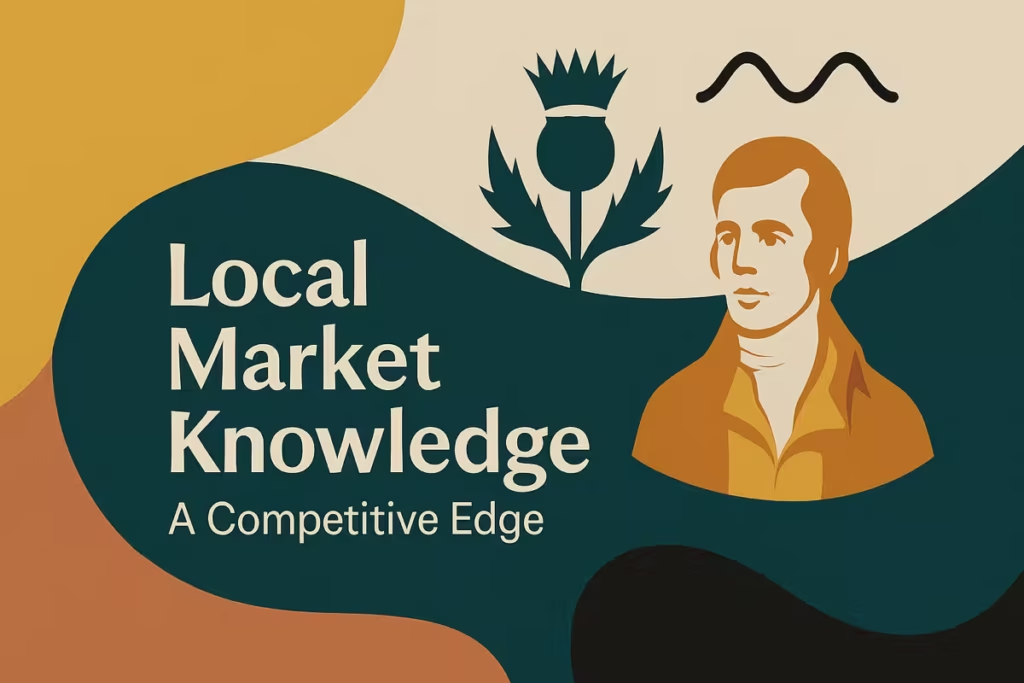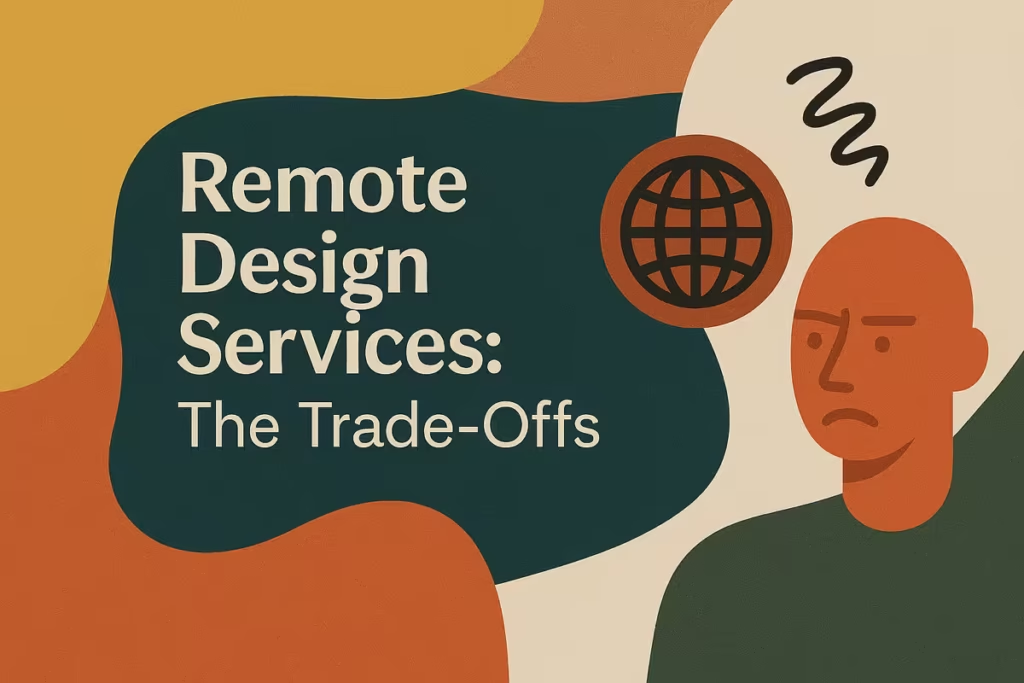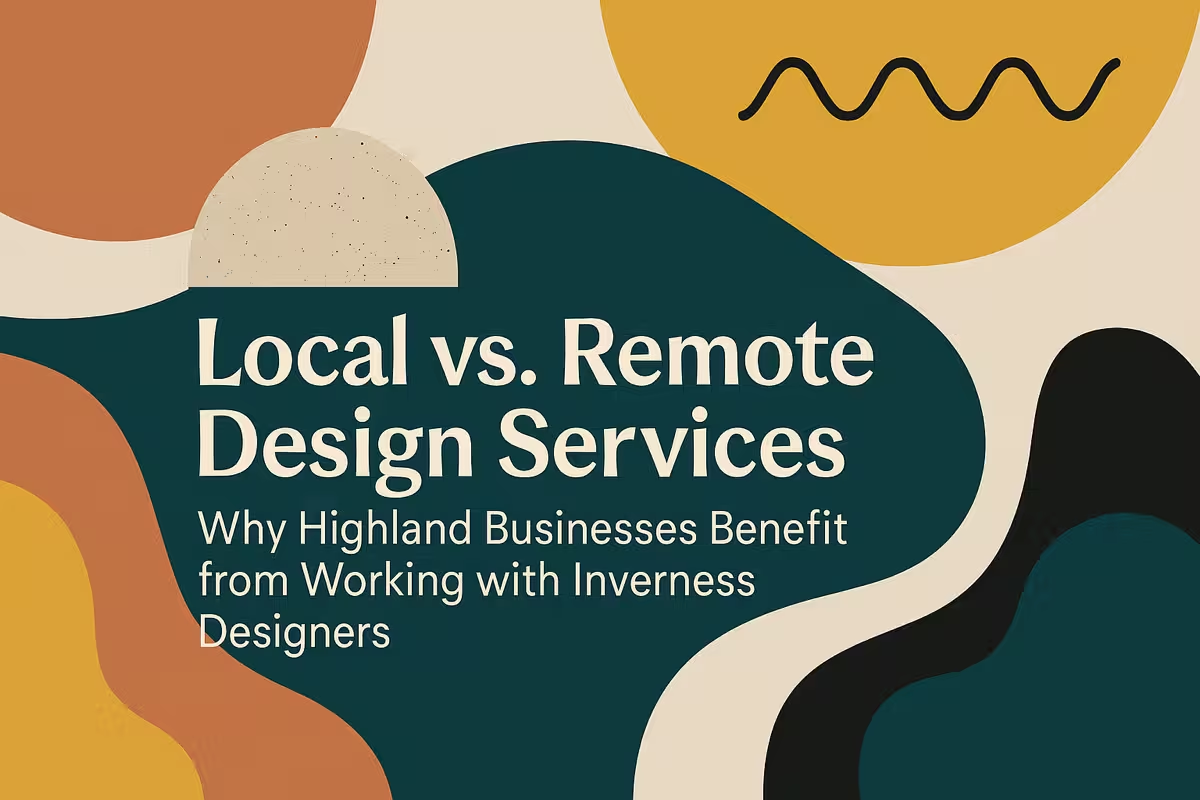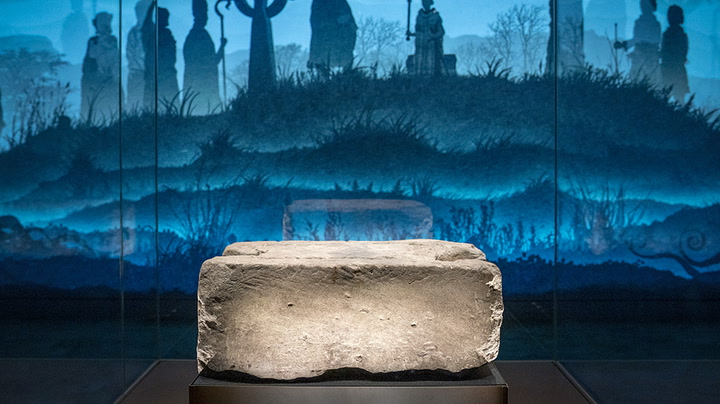Companies in the Scottish Highlands must decide whether to use distant design solutions or collaborate with nearby Inverness design providers. There is a strong argument for working with Highland graphic designers, who offer in-person interaction, cultural awareness, and hyper-local knowledge, even when offshore companies can offer worldwide talent and cost savings. Let’s examine why companies in the Highlands are turning to Scotland for local design assistance and how Inverness Design Studio distinguishes itself as a growth-oriented strategic partner.
The Power of Face-to-Face Collaboration
Communication is essential to design. In-person seminars and live brainstorming sessions are given top priority by Inverness creative studios, such as Inverness Design Studio. In contrast to the transactional nature of remote design collaboration, which frequently depends on emails or postponed video conferences, this promotes a deeper knowledge of client demands.
Think about a neighbourhood café in Inverness that wants to update its logo. A local Scottish design firm may visit the location, take in the ambience, and create images that accurately capture its spirit. With remote graphic design UK services, it is more difficult to duplicate this hands-on approach since subtleties like local aesthetics or community values may be missed.
Local Market Knowledge: A Competitive Edge
Resonating with a population that is proud of its heritage and progressive principles is the goal of Scottish Highlands branding, which goes beyond tartan and landscapes. These cultural quirks are instinctively understood by Highland graphic designers. For instance, an Edinburgh Fringe or Burns Night campaign calls for awareness of regional customs, which is something Inverness branding companies are quite good at.

Despite their competence, remote teams might not have this level of detail. It is possible for a distant branding services supplier to misunderstand regional languages or overlook chances to fit with Highland marketing goals, including supporting local craftspeople or boosting eco-tourism.
Speed, Flexibility, and Community Impact
Effective design processes still rely heavily on face-to-face cooperation, which is especially true in Inverness’s vibrant creative community. Even while technology has made it easier to work remotely, face-to-face communication still has clear benefits for both clients and designers.
This study looks at the theoretical foundations of in-person design processes, how Inverness creative studios use physical collaboration to improve design outputs, and real-world implementations of these ideas when collaborating with nearby companies.
The Science of Face-to-Face Design Collaboration
Studies that contrast remote versus co-located design processes uncover key distinctions in the ways that designers collaborate and communicate. When designers collaborate in physical places, they mostly communicate about design rather than technological limitations, according to studies on collaborative design environments.
Through direct visual and verbal communication, face-to-face sketching sessions enable designers to collaboratively set goals and explore creative spaces, fostering a common understanding.
Researchers found that designers in co-located workplaces spend much more time on bargaining and less time on meta-planning when comparing various remote collaboration technologies with traditional face-to-face drawing. This implies that since less time is spent organising the process itself, in-person cooperation promotes more effective decision-making and creative growth.
Communication Dynamics in Physical vs. Virtual Spaces
Designers working remotely have to pay more attention to software features and keeping each other’s movements in mind, which takes time away from the actual design work. While design communication was the dominant activity in all contexts, an analysis of collaborative design sessions showed that technology-related communication and awareness conversations were more prevalent in distant sessions.
During a remote sketching session, for instance, designers talked a lot about software capabilities, storing and uploading pictures, and this took time away from the actual design process. Likewise, in 3D virtual worlds, a lot of time was spent talking about places and following each other throughout the virtual world.
The Compelling Advantages of In-Person Design Workshops
In-person workshops are especially beneficial for creative collaboration because they provide three unique benefits that are hard to duplicate in remote environments.
Enhanced Connection and Collaboration
Designers can “read the room” and build sincere relationships with customers and team members by being physically present. This fosters a relaxed atmosphere where participants are more comfortable asking questions and offering ideas—interactions that frequently seem uncomfortable in virtual environments.
This idea is best demonstrated by the Inverness Creative Academy, which offers places especially made for group projects, such as classroom workshops and exhibition rooms that promote artistic collaboration.
Immediate Guidance and Feedback
In-person collaboration allows designers to get immediate input and explanation. Rapid iteration is made possible by this instant response cycle, which also avoids misconceptions that may otherwise arise in asynchronous communication. On the other hand, around half of designers say that working remotely lowers the quality of their work, and remote design work frequently suffers from delayed feedback loops.
The Three-Dimensional Experience
What one expert refers to as “the 3D, not 2D” experience is arguably the biggest benefit of face-to-face communication. Teams may complete more work in less time when physical workshops are used to create palpable energy that inspires creativity and enthusiasm.
Large sheets of paper, tactile tools, and mobility across the room are examples of tangible materials that may be used to create a more engaging and memorable experience than virtual whiteboards.
By constructing facilities specifically for artistic cooperation, such as 30 artist’s studios, a workshop space for classes, and event/exhibition spaces in their restored historic buildings, the Inverness Creative Academy has taken use of this insight. The three-dimensional, dynamic experiences that propel creative greatness are purposefully fostered in these settings.
The Reality of Remote Design Challenges
Despite the obvious advantages of in-person collaboration, the majority of designers really work remotely on a daily basis. Approximately two-thirds of designers handle remote scenarios in 80% or more of their projects, according to research. Significant difficulties arise from the widespread use of remote work, especially for creative projects that need group involvement and visual communication.
Common Pitfalls in Remote Design Collaboration
Inadequate planning is a common problem with remote design cooperation. Remote cooperation necessitates careful preparation and organisation, in contrast to in-person meetings where improvisation may be productive. Effective remote design sessions frequently divide tasks into manageable, strictly time-boxed chunks of two to five minutes, with clear, concise directions that eliminate any possibility of confusion.

Another frequent error is to assume that methods that work well in real-world settings would work well in virtual ones. Methodologies and expectations must be adjusted for remote design; many designers discover that face-to-face cooperation necessitates major modifications.
Local Insight: Branding for Inverness Businesses
When looking at local branding initiatives in Inverness, the need of in-person engagement is very clear. Local design firms may get fully immersed in a company’s physical space, picking up on minute nuances that faraway collaborations would overlook. As an example, the Inverness Design Studio offer face-to-face or remote design meetings to explore project scope, allowing for greater client flexibility. These meetings are completely free for new and existing customers.
The Café Branding Scenario
Let’s take the example of an old-fashioned café in Inverness that wants to update its identity. A local designer has the opportunity to visit coffee shops and cafes in Inverness, feel its “warm and inviting welcome” for themselves, and watch how customers use the establishment. These firsthand insights offer priceless context that would be hard to convey via video chats or emails from far away.
A local designer may pick up on these nuances, taking note of staff interactions, lighting, consumer demographics, and even scents that influence the overall perception of the brand.
The Local Design Agency Advantage
Creative agencies based in Scotland, such as The Inverness Design Studio, market themselves as partners who “collaborate with our clients to transform your business in the long term” and stress the need of direct client cooperation.
Face-to-face encounters with customers where they may “provide feedback during the branding project and steer the project” boost this collaborative approach.
Local Inverness companies create branding that really reflects local aesthetics and community values by collaborating with a Highlands-based design company. The finished brand will appeal to the target demographic since the designer is conversant with the local environment.
Inverness Creative Academy: A Hub for Collaborative Design
For the Highlands, the founding of Inverness Creative Academy signifies a major investment in in-person creative cooperation. Two B-listed old school buildings have been converted into “the Highlands’ first major creative hub” as a result of this £6 million initiative.
The following video from The Press and Journal back in 2022, showcases Inverness Creative Academy’s £6m renovation.
Facilities Fostering Face-to-Face Collaboration
The Academy provides a range of spaces designed specifically to facilitate in-person creative work:
- 30 artist studios for both solo and group projects
- A specific workshop area for instruction and knowledge exchange
- Spaces for exhibitions and events in the old gym
- 54 workplaces for cultural social businesses and the creative industries
- Co-working spaces that are adaptable for 26 creatives
- Multiple-level public display and event spaces
- Facilities and meeting spaces are available for rent.
- A public café that acts as a hub for social interaction in the renovated Assembly Hall
The physical infrastructure required for the “3D experience” that makes in-person design so successful is provided by this expansive facility, which promotes planned collaborations and chance meetings among creative people.
Community Impact and Regional Development
The Academy develops a “vibrant creative destination to serve the whole of the Highlands” rather than just offering workspace. It creates “a central home for collaboration, production, and opportunity” by focussing creative talent in one place.
By providing designers with the opportunity to interact directly with colleagues and avoid isolation, this physical hub helps to overcome the inherent drawbacks of remote work and fosters the creative energy that is hard to produce in scattered teams.
Balancing Face-to-Face and Remote Design Approaches
Although in-person collaboration has clear benefits, the realities of modern design practice necessitate a well-rounded strategy. The Inverness Design Studio is one of several Scottish design firms that provide “face to face and remote brand design services across Scotland.”
Strategic Integration of Collaboration Methods
Innovative design studios use hybrid strategies to optimise the advantages of both remote and in-person cooperation. While subsequent refining work may be done remotely with organised feedback cycles, initial exploration and conceptual meetings may be held in person to build connections and get detailed information.
Adapting to Client Needs and Constraints
Local design firms need to be adaptable, particularly when working with customers throughout Scotland. Even though in-person cooperation can be ideal, real limitations like time, money, and location sometimes make distant work necessary. The secret is identifying and prioritising the project phases that will gain the most from face-to-face communication.
Conclusion: The Enduring Value of Physical Presence in Design
Even with the advancements in remote collaboration technologies, in-person design engagement still has certain benefits that digital alternatives can’t match. From the tactile energy created in physical workshops to the empirical facts demonstrating more effective bargaining in co-located teams, face-to-face collaboration is still a potent weapon in the designer’s toolbox.
With initiatives like the Creative Academy, which offers the facilities required for in-person creative work, Inverness has established itself as a leader in collaborative design. This ecosystem helps local firms by giving them access to designers who are familiar with local circumstances and have direct experience with their surroundings.
The most successful practitioners of design will be those that intentionally strike a balance between in-person and distant collaboration, understanding when physical presence will most effectively enhance the creative process. There is still no alternative for being physically present, taking in the ambience that lends a location its own personality, and converting that experience into genuine design for projects that are firmly anchored in the local environment, such as branding a historic Inverness café.
Remote Design Services: The Trade-Offs
Unquestionably, remote agencies provide benefits including freedom in remote design and access to international talent pools. Businesses may collaborate with a distant creative firm in the UK for specific projects that call for specialised expertise, such as UX/UI design for mobile apps. Cost savings, however, may be outweighed by issues including poor communication, uneven quality, and overlooked cultural clues.

According to a recent poll, 41% of UK organisations report difficulties with remote design cooperation, with frequent complaints including delayed changes and misplaced expectations. These dangers may be greater than the rewards for SMEs in the Highlands, where connections are key to success.
Local vs. Remote: A Side-by-Side Comparison
| Factor | Local Design Services Inverness | Remote Design Services UK |
|---|---|---|
| Collaboration | Face-to-face meetings, real-time feedback | Reliant on digital tools; potential delays |
| Market Insight | Deep understanding of Scottish Highlands culture | May lack regional specificity |
| Speed | Quick turnarounds; no time zone barriers | Delays due to geographical distance |
| Cost | Competitive rates; supports local economy | Often cheaper, but hidden costs in revisions |
| Community Impact | Strengthens local networks and economy | Limited direct community benefit |
Why Inverness Design Studio Excels
Inverness Design Studio blends the inventiveness of a worldwide design team with the speed of a regional Scottish design firm. They provide unparalleled value in the following ways:
- Hyper-Local Expertise: Their portfolio includes e-commerce design Inverness and branding for Highland tourism that are suited to appeal to local audiences.
- Smooth Integration: They provide end-to-end solutions that complement Business Gateway Highland’s assistance programs, ranging from social media marketing Inverness to SEO services Inverness.
- Innovation Meets Tradition: They make sure that companies feel both up to date and grounded by striking a mix between contemporary Inverness design trends (such as minimalist layouts) and references to Highland tradition.
For instance, their collaboration with an outdoor gear firm in Fort William combined streamlined e-commerce features with harsh Highland scenery, increasing online sales by 140% in just six months.
Conclusion: The Local Advantage in 2025
Local design effect Scotland has never been more important as Highland firms manage digital change and post-pandemic recovery. Although remote design accessibility works well for some projects, Inverness Design Studio’s trust, quickness, and cultural fit make it a vital component of long-term success.
Investing locally guarantees that your brand communicates genuinely to the community—and the world—whether you’re a startup looking for reasonably priced branding services in the Scottish Highlands or an established business in need of assistance from an Inverness digital agency.
Ready to elevate your brand with a partner who knows the Highlands inside out? Explore Inverness Design Studio’s portfolio or connect with their team for a consultation today.
For further reading on local business support, visit Business Gateway Highland or explore HIE’s economic strategies.



